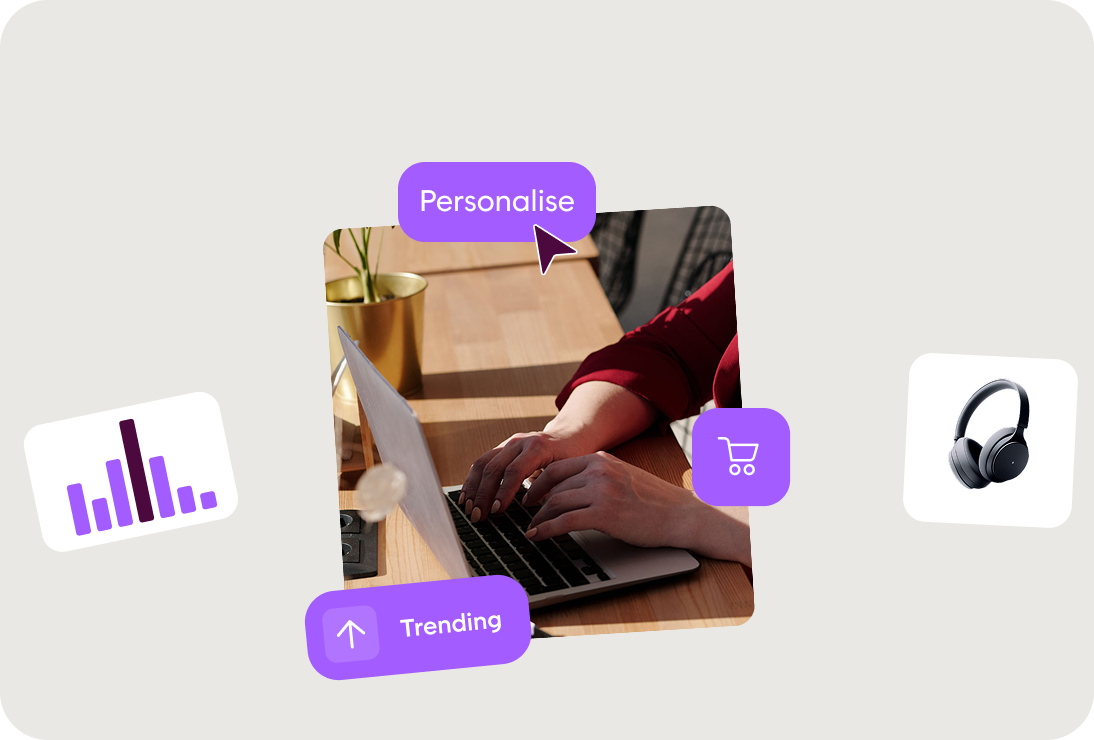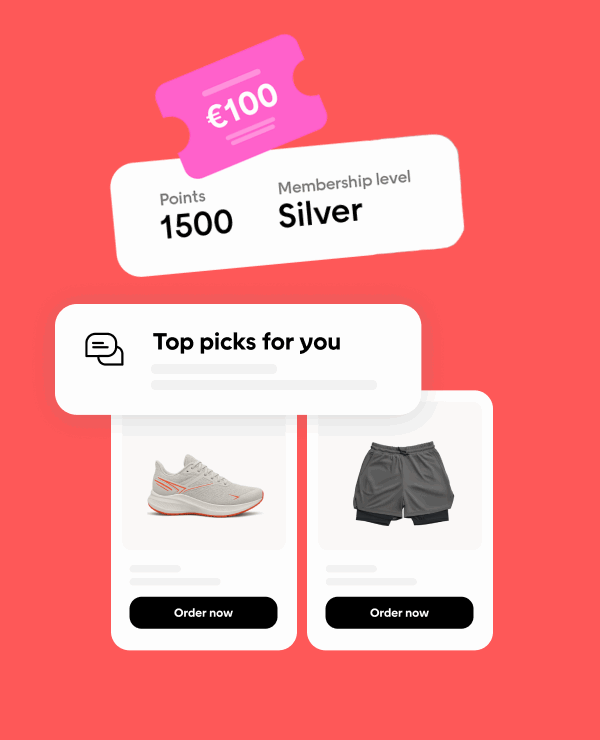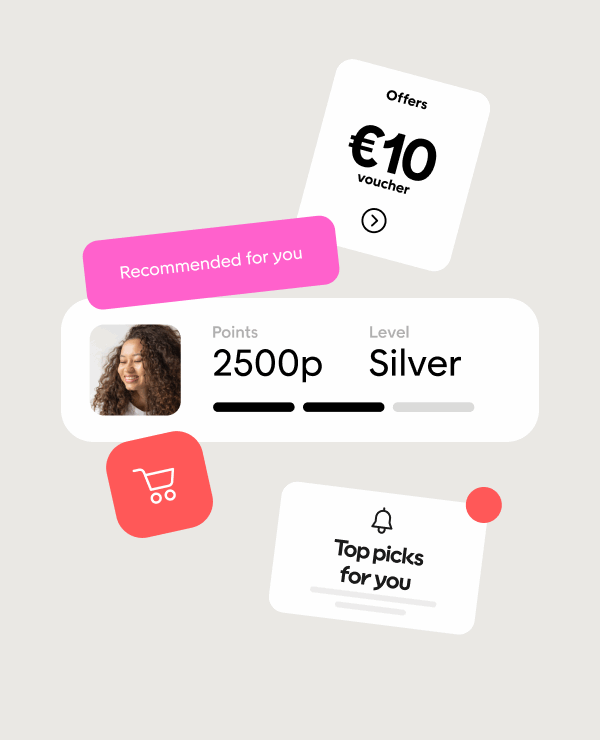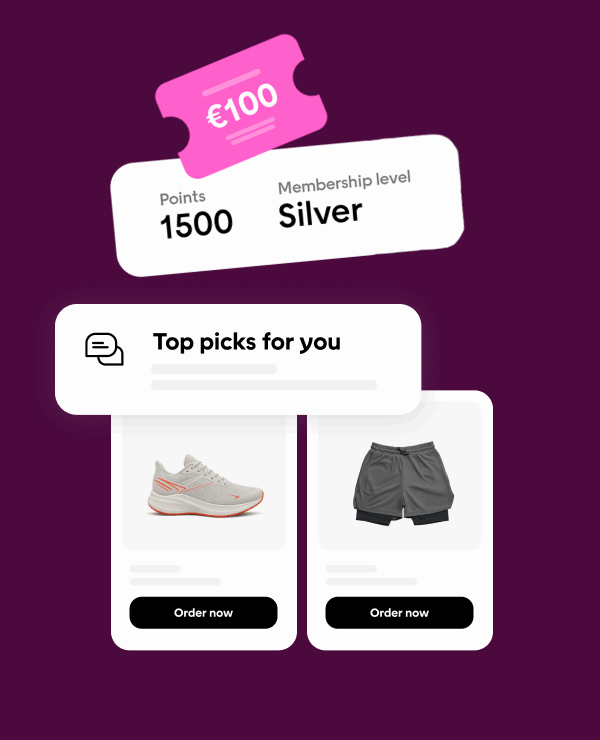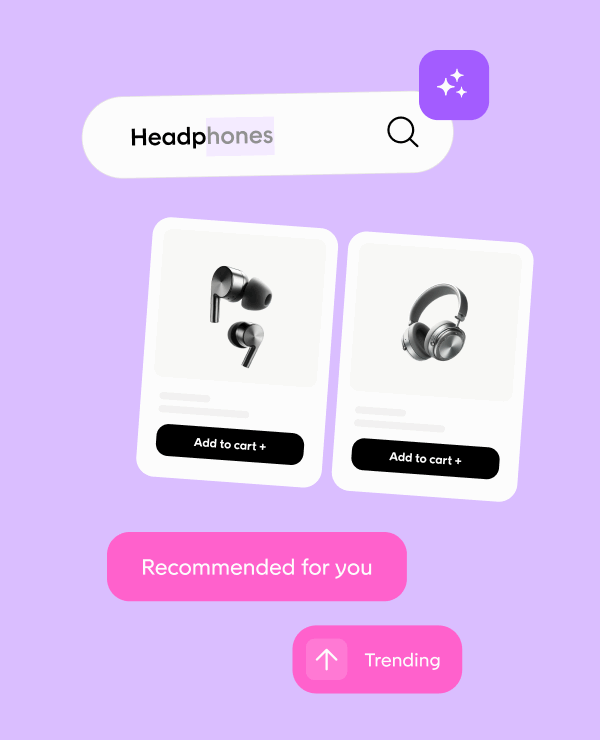TL;DR
- Personalization is key to building customer loyalty and delivering relevant shopping experiences.
- Capturing shopper data early reduces acquisition costs and supports long-term growth.
- Post-purchase personalization improves customer satisfaction and increases customer lifetime value.
- Personalized communications can recover abandoned shopping journeys and strengthen loyalty.
Creating personalized shopping experiences has moved far beyond a simple “Hi [First name]” in a campaign.
Today, shoppers expect e-commerce sites and stores to adapt to their needs in real-time. They want relevant products, offers, and recommendations at every step of the journey.
The key is understanding shopper intent. When retailers act on intent signals, they can build unique, timely customer journeys that boost conversions and loyalty.
We’ll explore the practical side of personalization. You’ll see how to turn casual visitors into loyal customers, recover abandoned shopping journeys, and use post-purchase personalization to increase customer lifetime value.
Turning casual shoppers into loyal customers
Capturing intent during the very first visit is one of the most effective ways to reduce acquisition costs and build long-term loyalty.
When a visitor shows clear interest, your team has a short window to turn that casual browser into a loyal customer.
Here are some approaches that work well:
- Identify the right moment to ask for details: If a shopper spends extra time browsing or adds items to the cart, prompt them to sign up with an incentive. Even something as simple as a first-purchase discount can open the door to re-engagement.
- Personalize follow-up communications: Once you have their details, avoid generic campaigns. Use browsing data and purchase history to send personalized recommendations that feel timely and relevant.
- Surprise and delight existing customers: If a repeat visitor has already used the first-time discount, offer early access to a new collection, or highlight an unused reward in their account. This creates a sense of value and exclusivity.
In practice, this strategy pays off. LAKRIDS BY BÜLOW improved customer loyalty by seamlessly identifying both online and in-store shoppers through Voyado.
By building on this data, they increased purchase frequency by 8% and basket size by nearly 5%.
The key is not just collecting data but acting on it with personalized communications.
When your business uses each interaction to add value, you strengthen customer loyalty and set the stage for higher lifetime value.
Now, let’s take a look at how to win back abandoned shopping journeys.
Winning back abandoned shopping journeys
Even the best e-commerce site faces abandoned sessions. Shoppers browse, add items to their cart, and then leave without making a purchase. These moments may feel like lost opportunities, but they are actually a chance to re-engage and drive long-term value.
Your team can reduce acquisition costs and increase customer satisfaction by focusing personalization efforts on abandoned journeys. Here are a few ways to do it:
- Use browsing and historical data:If a shopper repeatedly views the same product, trigger a reminder email or personalized recommendation that highlights its benefits.
- Act fast after abandonment:A timely follow-up through email or SMS can bring a shopper back to your online store before they lose interest.
- Personalize recovery offers:Instead of a blanket discount, offer early access to new stock or relevant recommendations based on the customer’s journey. This feels more personal and avoids unnecessary margin loss.
Retailers using Voyado have seen that even small adjustments here create a significant uplift.
POWER A/S, for example, increased customer engagement by over 300% after automating reminders tied to abandoned sessions.
But, winning back abandoned shopping journeys is not about aggressive discounts. It is about showing customers that your brand understands their intent and can add value in the right moment.
Next, we’ll break down how to create loyalty with post-purchase personalization.
Creating loyalty with post-purchase personalization
The shopping journey does not end at checkout. In fact, post-purchase is where your business has some of the strongest opportunities to build loyalty and grow customer lifetime value.
Here are three ways to make post-purchase personalization work:
1. Send more than a receipt:
Instead of a standard order confirmation, send an email that feels personal and helpful. For example:
- A customer who buys running shoes could receive care tips for extending product life, plus a recommendation for performance socks.
- If the purchase was a gift, you could include suggestions for wrapping accessories or related items.
This turns a routine email into a personalized experience that improves customer satisfaction and makes the brand feel thoughtful.
2. Offer early access and exclusivity
Reward loyalty by letting your best customers shop first.
For example:
- JACK & JONES gives loyalty members exclusive access to new collections before the public, which has driven a 33% increase in average order value .
- Your business could do the same by offering VIP early access to seasonal sales or “back in stock” alerts.
Exclusivity creates a sense of privilege and strengthens the emotional bond with your brand.
3. Use AI-powered personalization
Artificial intelligence and machine learning can help predict the best time and way to re-engage. For example:
- If historical data shows customers often reorder skincare products after six weeks, AI can trigger a timely reminder before the product runs out.
- NELLY used automated post-purchase campaigns in Voyado to send personalized messages in real time, improving engagement and building stronger customer journeys .
By acting on customer data with AI, your team reduces human error and delivers follow-ups that feel perfectly timed. This creates actionable insights that drive both conversions and customer lifetime value.
Personalization leaders like you know that the post-purchase stage is a key factor in building loyalty.
When your team treats every purchase as the start of a deeper relationship, your business creates long-term value that goes far beyond the first order.
Next up: How to personalize return sessions for stronger customer loyalty.
Personalizing return sessions for stronger customer loyalty
A return visit is a powerful signal.
The shopper has already shown interest, and now your business has the chance to greet them in a way that feels both familiar and fresh. Unlike a first-time session, a return session gives you past data to work with.
Here are a few ways to make return visits more effective:
Pick up where the shopper left off
If a customer previously spent time on a product page, start their new session by showing that same product, plus complementary recommendations.
For example, a shopper who viewed a sofa might see matching coffee tables or home décor items on their next visit. This builds trust by showing you remember their intent.
Recognize when intent has changed
Return sessions do not always mean the customer wants the same product. If a shopper who once browsed summer dresses is now searching for winter jackets, they are signaling a shift.
Keep personalization flexible by showing trending seasonal products while still surfacing their preferred size or favorite brands.
Turn return visits into loyalty moments
This is the perfect time to highlight loyalty benefits. For example, LAKRIDS BY BÜLOW identifies in-store and online customers through Voyado, then personalizes offers based on membership status.
Almost half of their store customers now identify as loyalty members, strengthening both brand connection and purchase frequency.
Use predictive analytics to close the loop
If data shows a shopper who revisits a category three times is close to buying, prompt a timely nudge such as “Only 3 left in stock” or an invitation to join early access for the latest collection.
These small signals can move a shopper from browsing to purchase while improving customer satisfaction.
Want to deep dive into personalization? Check out our guide on 10 Strategies for personalization in e-commerce.
When your business can personalize return sessions, you’ll be building more than just transactions.
You’ll create ongoing customer journeys that drive conversions, strengthen loyalty, and grow customer lifetime value.
Over to you: Moving forward with shopper intent
Personalization is no longer about a single campaign or a clever subject line. It is about recognizing shopper intent in every moment and using it to build stronger customer journeys.
When your business adapts to intent signals in real time, you reduce acquisition costs, improve customer satisfaction, and create loyalty that lasts.
Here are three steps we recommend to get you started:
- Start small with intent signals: Focus on one area, such as browsing patterns or product pages, and experiment with personalized recommendations.
- Use your customer data wisely: Combine demographic data, purchase history, and historical data to create relevant experiences that feel personal.
- Test and refine your personalization efforts: Look at what drives conversions, measure the impact on customer lifetime value, and use predictive analytics to improve over time.
The retailers with the best results start simple, prove value, and then scale.
With the right data-driven software for e-commerce personalization, your team can build personalized shopping experiences that strengthen customer loyalty and drive long-term growth.
Ready to see how shopper intent can transform your personalization strategy? Book a demo.
FAQs
What is the main difference between shopper intent and customer intent?
Shopper intent usually refers to what a customer wants in the moment during their shopping journey. Customer intent is broader and can reflect longer-term goals, like loyalty or repeat purchases. Both are key factors in creating personalized experiences.
How does retail personalization improve customer satisfaction?
Retail personalization uses customer data, browsing patterns, and predictive analytics to create relevant recommendations. When your online store shows the right products on product pages or landing pages, customers feel understood on a personal level, which improves satisfaction and loyalty.
What role does artificial intelligence play in personalization efforts?
Artificial intelligence and machine learning help your business act on data in real time. For example, AI-powered personalization can reduce human error, analyze historical data, and turn insights into actionable steps that drive conversions.
Can personalization reduce acquisition costs?
Yes. When personalization efforts are data-driven, your team spends less on broad campaigns and focuses on the right data. This lowers acquisition costs and increases customer lifetime value, since more customers return and make repeat purchases.
How can businesses balance data privacy with personalization?
Your business should always use data responsibly. Be clear about what data is collected, focus on giving customers value in exchange, and avoid personalization that feels invasive. The goal is to build trust and long-term loyalty while still driving conversions.

